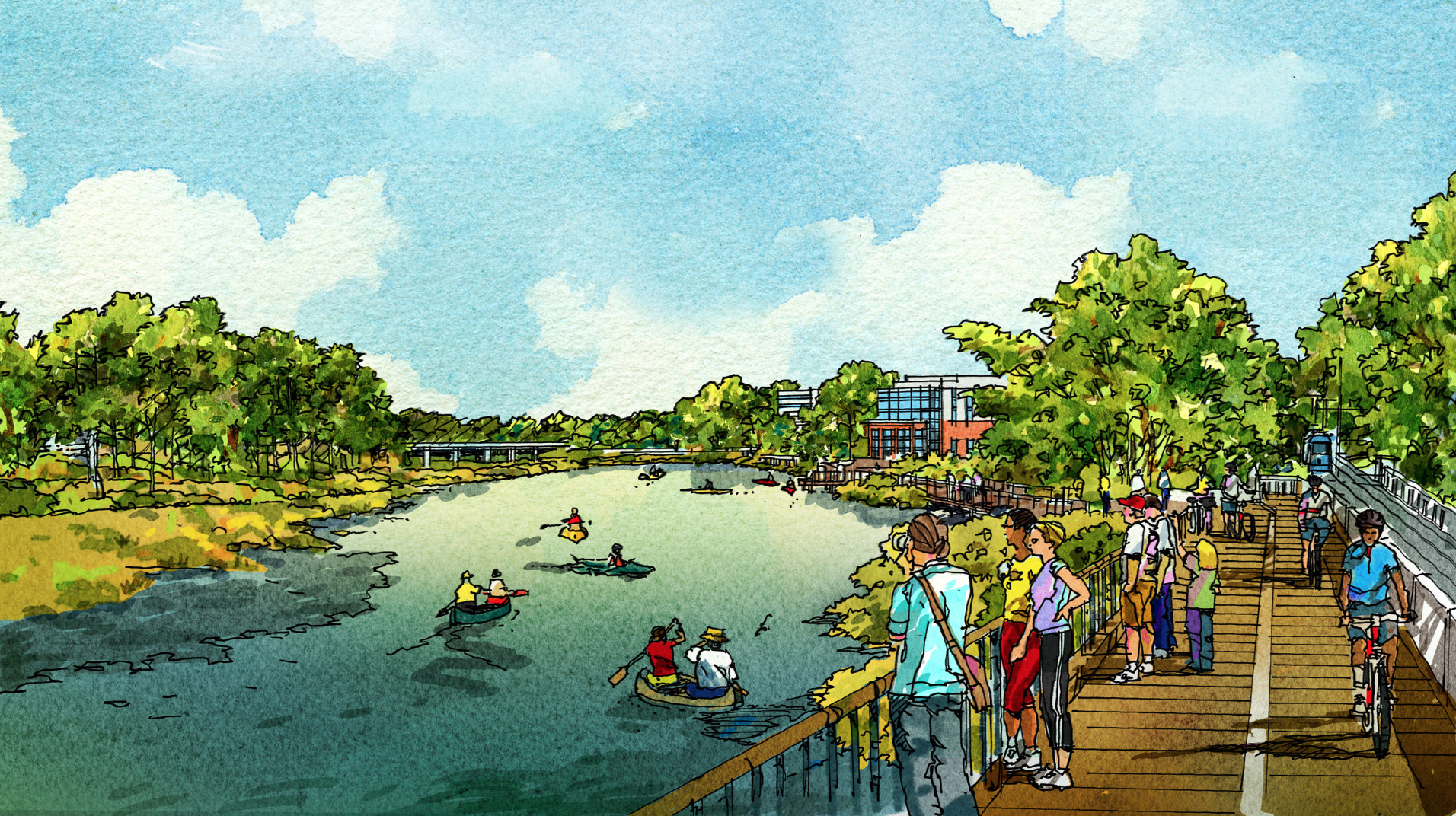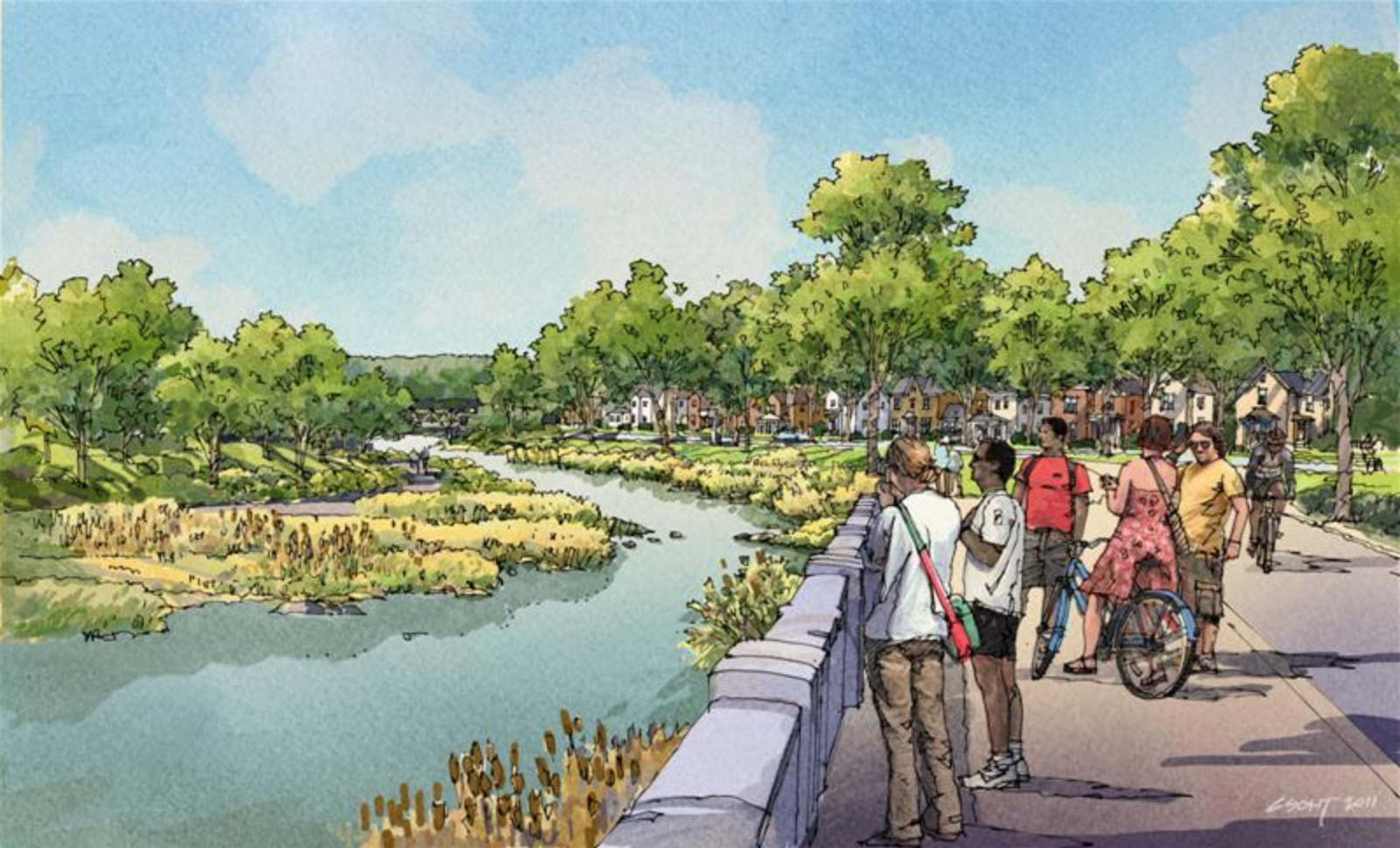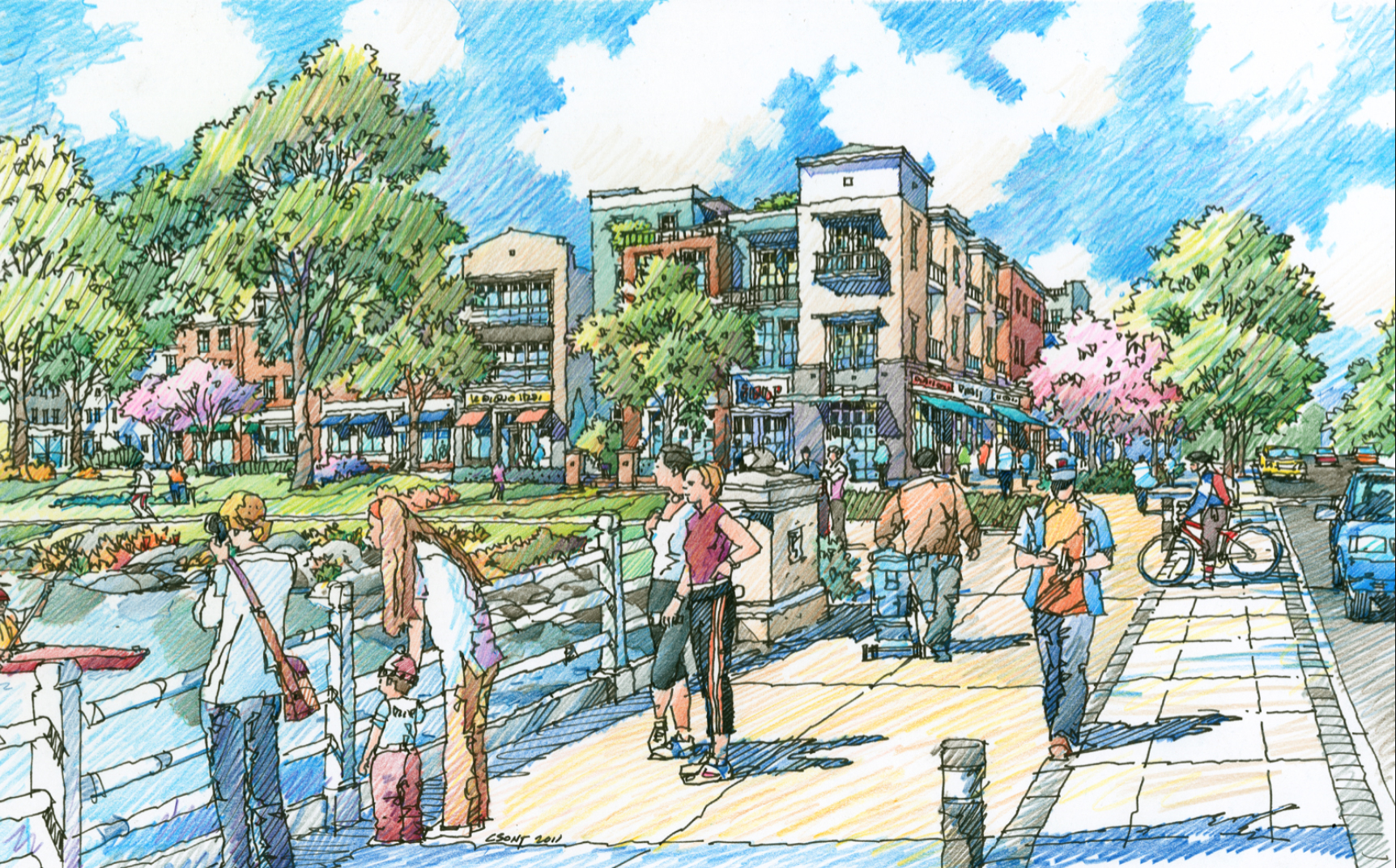Uncovering Value
The natural advantages of stream reclamation
For many, a life in town has had to come at the expense of access to nature. But as cities regenerate across the country, they are capitalizing on the restoration of streams and natural drainage ways that, up until recently, have been used for storm sewers, dumping grounds, and urban backwaters. They are uncovering them, cleaning them up, and maximizing their utility as great neighborhood addresses, sustainable storm water systems, and recreational destinations. It is stabilizing property values and saving millions in capital improvement dollars in the process.
Cincinnati, OH, for example, is making great use of Mill Creek and its tributaries to accomplish multiple goals:
- Address combined sewer overflows (CSOs)
The City is under a federal consent decree to curb sewage overflows and backups resulting from storm events backing up sewer systems that combine sewage and storm water conveyance. - Interstate 75 reconstruction
The City was able to take advantage of reconstruction efforts to think comprehensively about how the redesign of the interstate can better accommodate natural drainage and neighborhood regeneration in the Mill Creek watershed. - Neighborhood Regeneration
The Mill Creek watershed is home to several neighborhoods that are heavily impacted by the twin challenges of flooding and lack of access from or across Interstate 75. Converging the efforts of repairing the watershed and the interstate allowed the neighborhoods to be thought of in concert with the broader hydrological and transportation systems.
Early phases of Cincinnati's implementation on one tributary, Lick Run, is already seeing significant savings over conventional "buried" approaches and creating in the process a great address for urban development.
The City of Ogden, UT, is also reclaiming its river from a tire dumping ground to a memorable address for mixed-use neighborhoods. Today, kayakers, runners, bikers, and walkers are able to access the water and riverfront trails. Once a backwater, the river is now a front door for downtown and creating incredible value for a once-forgotten neighborhood.
Virginia Beach, VA, is taking advantage of light rail station area planning to recover access and use of the Lynnhaven River that connects inland neighborhoods to the Chesapeake Bay and the Atlantic Ocean. By managing upland storm water through reducing impervious parking surfaces and stabilizing river banks, the City will be able to manage storm water and tidal impacts. The recreational access to the river will improve the value of fronting development and be a centerpiece to the Lynnhaven neighborhoods.
Rebuilding these corridors does not replace access to truly natural, rural areas that only comes from well defined urban edges. But building naturalized urban "rooms" within our cities and towns allows people, if only temporarily, to escape the city. By restoring a more natural drainage, our urban infrastructure can become more resilient to increasingly difficult-to-predict weather events. And it is at the confluence of these two natural advantages where we have the ability to create real value and memorable neighborhoods.



